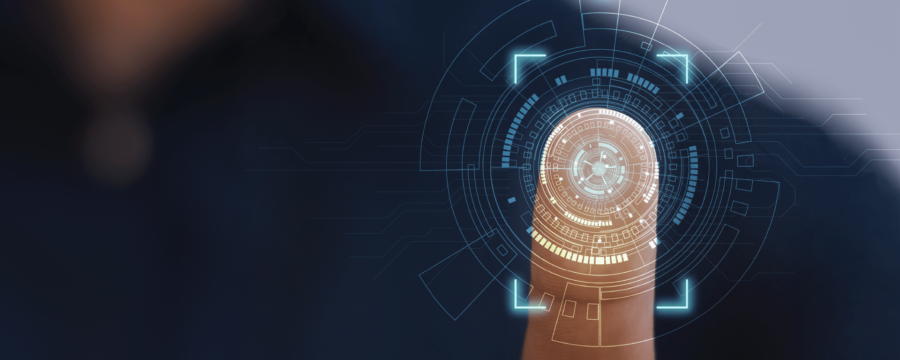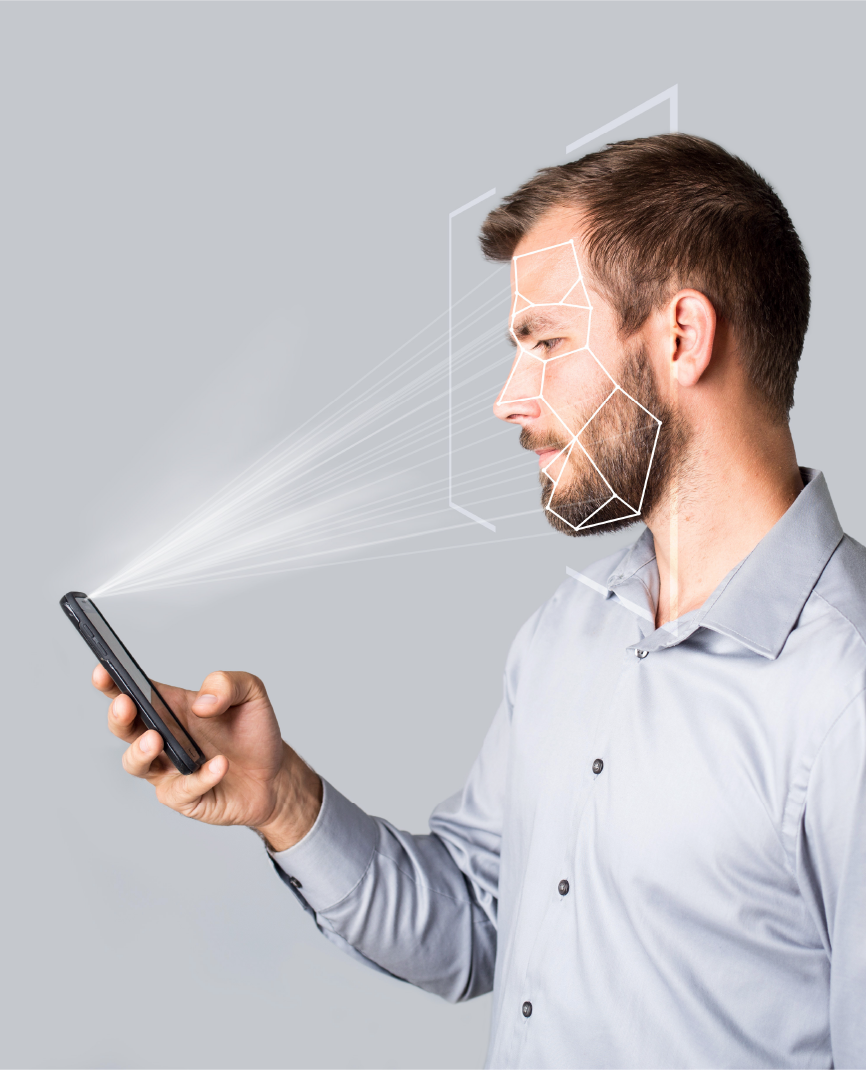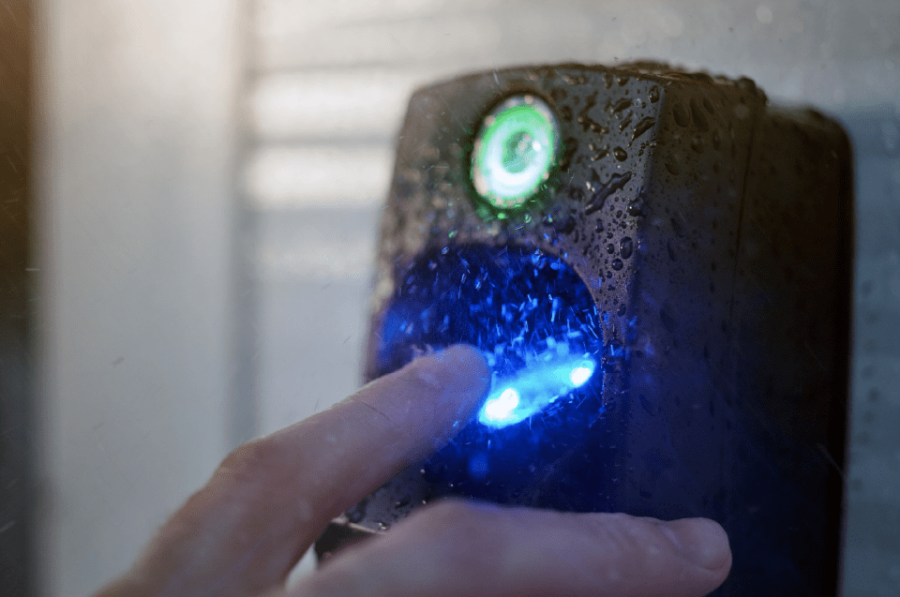The future of access control is in biometrics. That much has been clear for a number of years now. The biometrics market is expected to reach a value of over $21 billion globally by 2026 [1]. Both the quantity and the quality of biometric access control solutions available on the market have seen huge increases in the past 20 years.
Your business has recognised the benefits of biometric access control. But how do you know whether to choose fingerprint or facial recognition solutions? Which is more secure? Which is easier to use? Which is more cost-effective?
Benefits of biometric security
Access control using swipe cards and keypads has dominated the market since its advent in the second half of the 20th Century. While technology has advanced in order to improve the security of these methods, they retain some inherent weaknesses. A swipe card or tag can be lost, forgotten, or stolen. A keypad code can be given away to unauthorised people.
Biometric security overcomes these common access control challenges. The authorised person must be physically present at the door in order to use their fingerprint or face to gain access. The risk of theft is also practically eliminated, as cloning biometric data is extremely difficult. Many biometric solutions even have built-in features to prevent clones being used to gain access. Finally, while cards, tags, and codes can be misplaced or forgotten, biometric data by its nature goes everywhere with you.

Fingerprint recognition explained
Fingerprint recognition readers analyse a user’s fingerprint in order to identify the patterns and shapes in it that are unique to the user. The chances of another person having identical fingerprints to you is 1 in 64 trillion [2]. The ridges, lines, and whorls on your fingertips are totally unique.
When a user’s finger is presented to an electronic reader, the device uses a sensor to scan the fingertip. The scanned image is then analysed to identify the tiny features of the fingerprint that are unique to the user. This is compared against the existing database of fingerprints in the system. If a match is found, and the user has the right permissions, they are granted entry.
Facial recognition explained
 Facial recognition for access control uses special cameras to analyse the physical features of a person’s face. Although everybody shares the same basic facial features, the precise sizes and locations of them on your face are (almost) unique. Some people, such as family relations, have more similar features than others, but tiny variations mean technology can distinguish them. The only individuals who may prove a challenge for facial recognition systems are identical twins [3], whose facial features may not be distinct enough to identify them.
Facial recognition for access control uses special cameras to analyse the physical features of a person’s face. Although everybody shares the same basic facial features, the precise sizes and locations of them on your face are (almost) unique. Some people, such as family relations, have more similar features than others, but tiny variations mean technology can distinguish them. The only individuals who may prove a challenge for facial recognition systems are identical twins [3], whose facial features may not be distinct enough to identify them.
When a person approaches a facial recognition camera, the camera uses light sources to create a digital map of the face. The precise measurements and relative locations of the features are recorded. That digital representation is compared with those saved in the system’s database. If a match is found, and the user has the right permissions, they are granted entry.
Choosing the right solution for you
What is the environment like?
When deciding between fingerprint and facial recognition technology, the first factor to consider is the environment where it will be used. If it’s an office building, people probably generally enter and leave at predictable times in the morning and evening. They are likely to be tertiary workers with good fingerprints undamaged by manual labour. In this case, a fingerprint reader might be the best solution. However, on a construction site, where hands may be wearing gloves, covered in building materials, or damaged by manual work, facial recognition might be more suitable.
What are the users like?
Next, consider the users. People generally don’t care what method of access control they use, provided it is convenient for them. To use a fingerprint reader, a person must have a hand free to present their finger to the reader. Most fingerprint readers also need a few seconds to analyse the finger and match it to the database. In an environment such as a warehouse where people might be carrying boxes or need faster identity validation, facial recognition may be a better solution.
| Advantages | Disadvantages | |
| Fingerprint Recognition | Completely unique identifying feature of a person
Very high degree of accuracy
Fingerprints are generally stable over time |
Requires physical contact with a scanner
Can take longer than facial recognition
May be more difficult to use if fingerprints are dirty or damaged
Excludes people who do not have hands or fingers |
| Facial Recognition | Zero contact required for recognition
May be faster than fingerprint recognition
All individuals have facial features that can be registered |
Facial features may change more over time or alter with appearance
Close family resemblance or twins can be challenging
More vulnerable to changes in light conditions
Angle of approach can affect efficacy of recognition |
Both fingerprint and facial recognition technologies take advantage of the inherent security benefits of using physical features of the human body to validate identity. Deciding which one is best for your project will depend on a range of factors. Where is the system being installed? What kinds of people will use it?

Functionalities and capabilities also vary with each individual product. For example, not all fingerprint readers can be installed outdoors. The ievo micro™ is ideal for indoor areas with lower overall levels of traffic. If a fingerprint reader is required outdoors, then your project will require the ievo ultimate™ instead. This reader is equipped with a powerful multi-spectral imaging sensor that can identify fingerprints even through levels of moisture, dirt, and damage.
In the same vein, not all facial recognition cameras are built the same. iface™, the facial recognition solution by CDVI, utilises two different light sources. The combination of white light and near-infrared light allows iface™ to generate a 3D digital map of each face. By incorporating a 3D representation of the face, iface™ can weed out people attempting to spoof it with a photograph of a registered user.